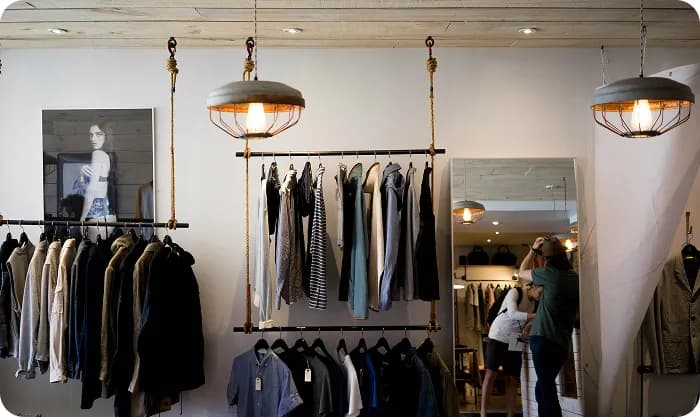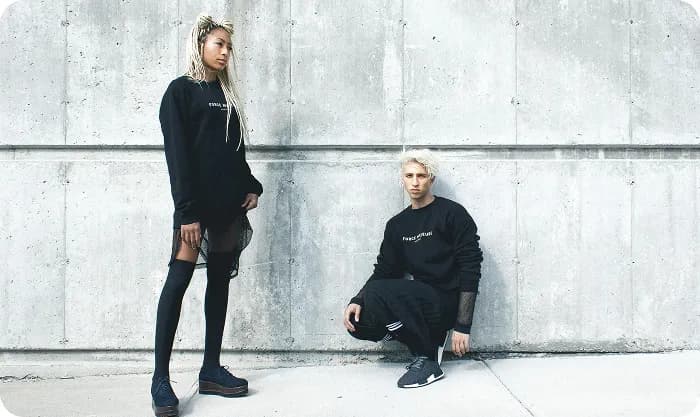I n the world of fashion, your brand is more than just a name—it’s a statement, an identity, and a promise to your customers. Whether you’re sketching your first designs or running a thriving label, creating a fashion brand that stands out is no small feat. To ensure your hard work isn’t compromised, it’s essential to protect your designs and brand identity while crafting a cohesive story that resonates with your audience. Let’s dive into some of the specifics of how to build a clothing brand you can wear with pride.
Trademarks and Copyrights: Essential Protection for Fashion Designers
As a fashion entrepreneur, your designs and brand elements are your intellectual property. Protecting them isn’t just a legal necessity; it’s a way to ensure your creative vision remains uniquely yours. According to the World Intellectual Property Organization (WIPO), trademark filings in the fashion industry have grown steadily over the years, reflecting the increasing awareness of the need for brand protection among entrepreneurs.
Understanding these tools will empower you to safeguard your creations, ensuring your fashion design business ideas flourish without the threat of imitation. Taking these steps not only secures your work but also enhances your professional credibility.
Copyright
In the United States, copyright protection applies to original, tangible works such as sketches, patterns, or fully realized designs under the U.S. Copyright Act (Title 17 of the U.S. Code). By registering your designs with the U.S. Copyright Office, you can prevent others from copying or distributing your work without permission. This is particularly crucial for designers creating one-of-a-kind pieces or custom collections.
Trademarks
Your brand’s name, logo, and tagline can be protected under the Lanham Act. Trademarks prevent competitors from using elements of your brand identity, ensuring customers associate your brand exclusively with your products. You can register your trademarks with the U.S. Patent and Trademark Office (USPTO) for nationwide protection.

Create a Fashion Brand: The Importance of a Cohesive Brand Story
Every successful fashion brand has a story. This narrative weaves together your values, inspirations, and aspirations, creating an emotional connection with your audience. To create a fashion brand that captivates customers, consistency is key.
Define Your Brand Identity
Your brand identity encompasses your logo, typography, color palette, and messaging. Think of these as your brand’s visual and verbal language. A well-defined identity makes it easier for customers to recognize your work and feel aligned with your mission.
Align with Your Target Audience
Who are you designing for? According to Statista, the global fashion market was valued at $1.7 trillion in 2023, with diverse segments ranging from luxury to fast fashion. Understanding your audience’s preferences, lifestyles, and values is crucial when crafting your brand story. Whether it’s a line of sustainable streetwear or high-end couture, ensure your messaging resonates with your ideal customer.
Be Consistent Across All Platforms
From your website to your social media accounts, every touchpoint should reflect your brand’s essence. Consistency builds trust and reinforces your story, making your brand more memorable.
By focusing on these elements, you’ll create a cohesive and compelling brand story that strengthens your connection with your audience and sets you apart in the competitive fashion industry.
Your brand is more than just a name—it’s a statement, an identity, and a promise to your customers.
How to Build a Clothing Brand: Starting Strong
When learning how to build a clothing brand, start with a strong foundation. A thoughtful beginning ensures your brand has the resilience to grow and succeed.
Unique selling proposition (USP). Decide what sets your designs apart—whether it’s eco-friendly materials, artisanal craftsmanship, avant-garde silhouettes, or any number of other distinctive features. Define your USP to carve out your niche in the market.
Quality matters. High-quality products speak for themselves. Ensure your materials and production processes meet the standards your audience expects.
Legal protection. As mentioned earlier, invest in copyright and trademark registrations. These protections solidify your claim to your designs and brand identity.
Starting strong with these foundational steps can position your brand for long-term success. With these building blocks in place, you’ll be prepared to navigate the challenges and opportunities of the fashion industry.
How to Build a Fashion Brand: The Long-Term Vision
Once you’ve established your presence, it’s time to think about growth and longevity. Building a fashion design business with a long-term vision helps to ensure that your brand continues to thrive as trends evolve. By implementing these strategies, you’ll foster brand loyalty, maintain relevance, and ensure steady growth. A long-term perspective is key to staying competitive in the ever-changing fashion landscape.
Collaborations and Partnerships
Teaming up with influencers, stylists, or other brands can amplify your reach and introduce your brand to new audiences. Research from McKinsey shows that consumers are influenced by social media collaborations.
Sustainability and Ethics
Modern consumers value brands that prioritize environmental and social responsibility. The Ellen MacArthur Foundation highlights that the fashion industry is responsible for 10% of global carbon emissions, making sustainability a pressing concern.
Customer Loyalty Programs
Reward your loyal customers with exclusive discounts, early access to collections, or personalized shopping experiences. Once someone becomes a customer, it is important to put continual effort into keeping them. If you intend to run your fashion business online, learn more about consumer protection and e-commerce laws.

Creative Fashion Business Ideas
If you’re looking for inspiration to spark your creativity, consider these fashion business ideas. They can help you find a niche that aligns with your vision and appeals to a modern audience.
Athleisure wear. Combine style and comfort with trendy, functional designs for active lifestyles.
Upcycled fashion. Use recycled materials to create one-of-a-kind pieces while promoting sustainability.
Cultural fusion. Design collections that blend traditional aesthetics with contemporary trends.
Exploring innovative concepts like these can help you differentiate your brand and appeal to diverse markets. The key is to remain authentic to your vision while meeting the needs of your target audience.
Protect Your Designs and Let Your Brand Shine
Fashion is an art form, but it’s also a business. Protecting your designs and creating a cohesive brand story are essential steps for any entrepreneur aiming to create a fashion brand that endures. By combining creativity with strategic planning, you’ll be equipped to build a brand you can wear with pride.
Resources:






